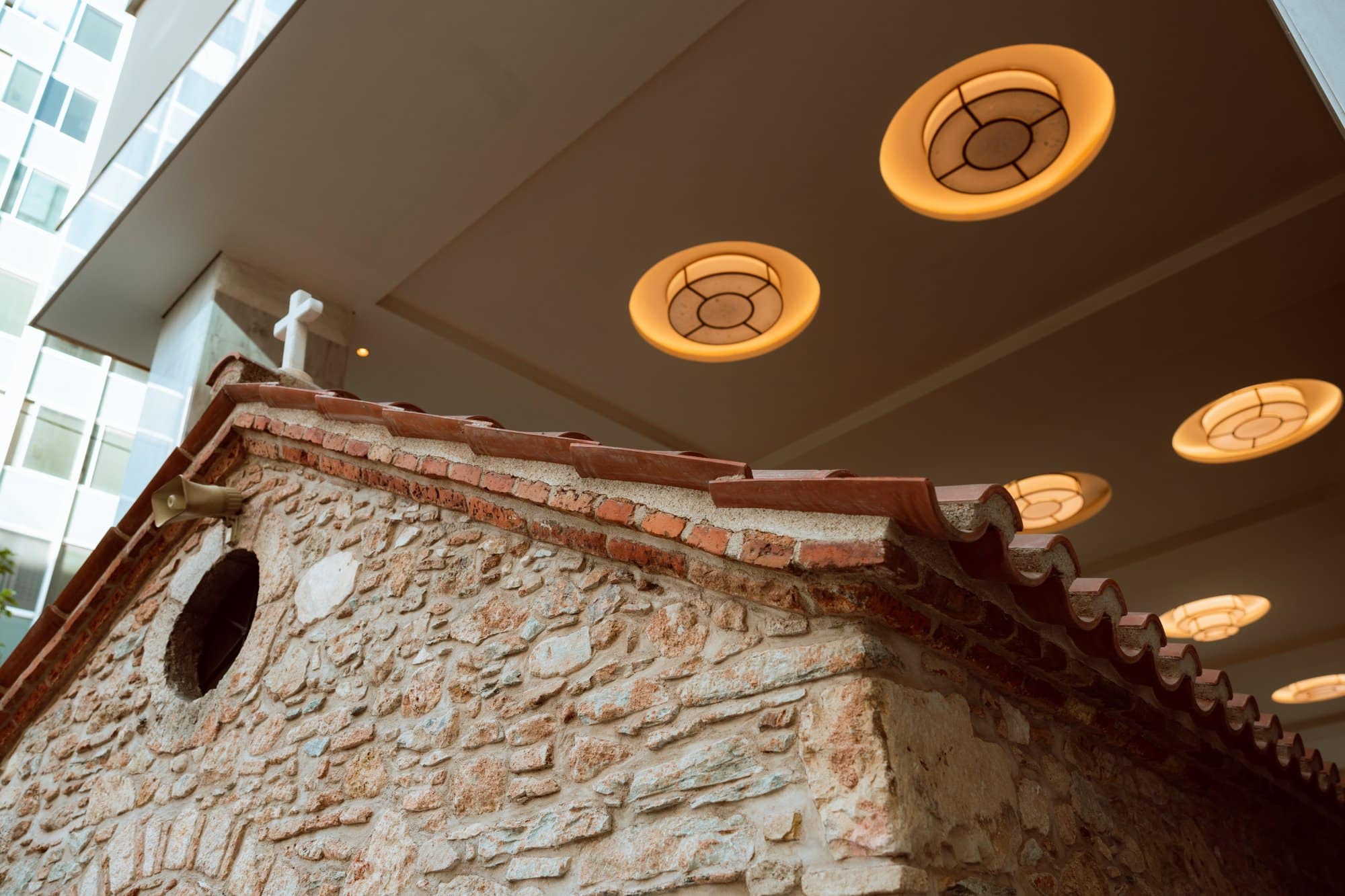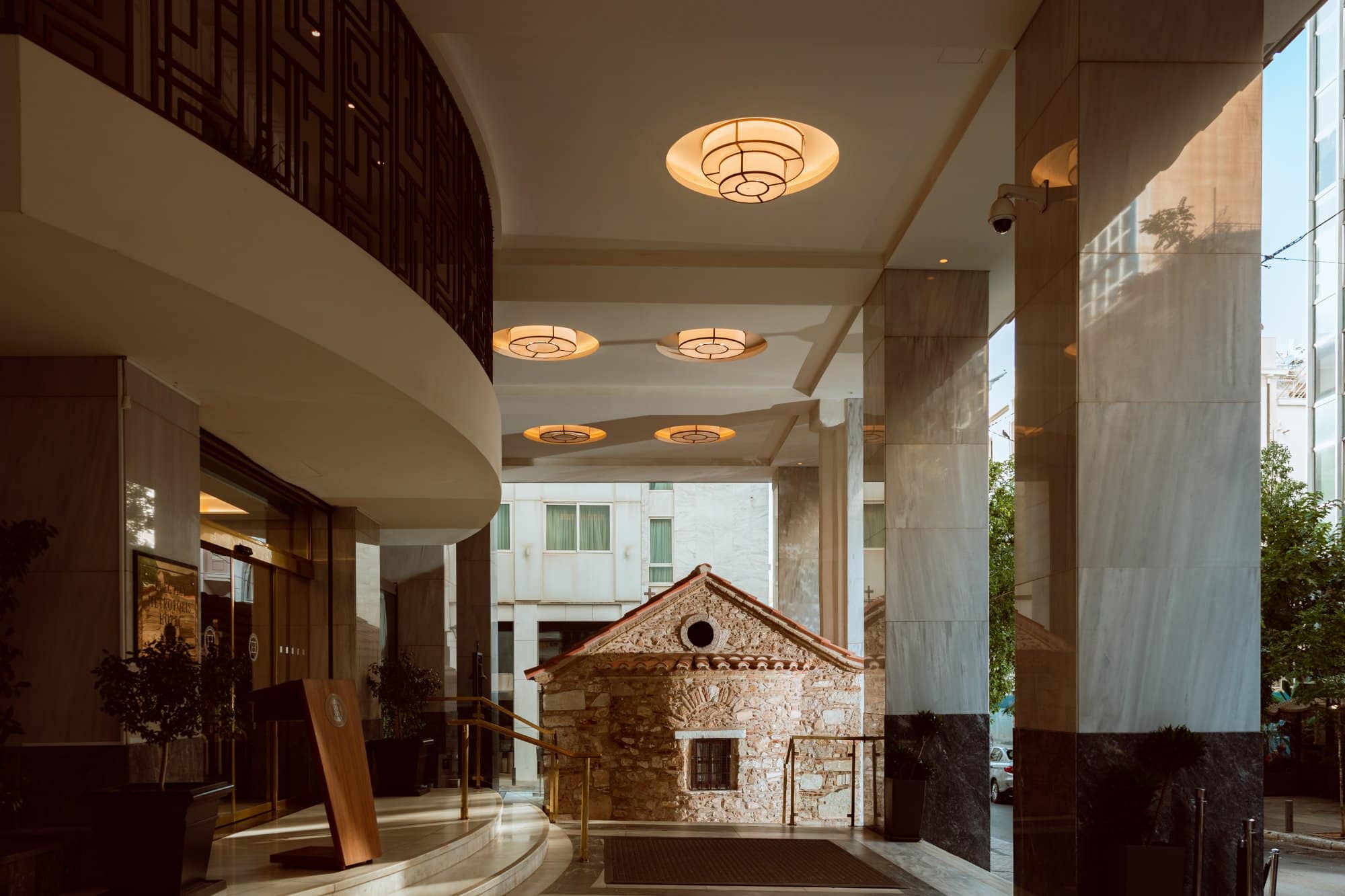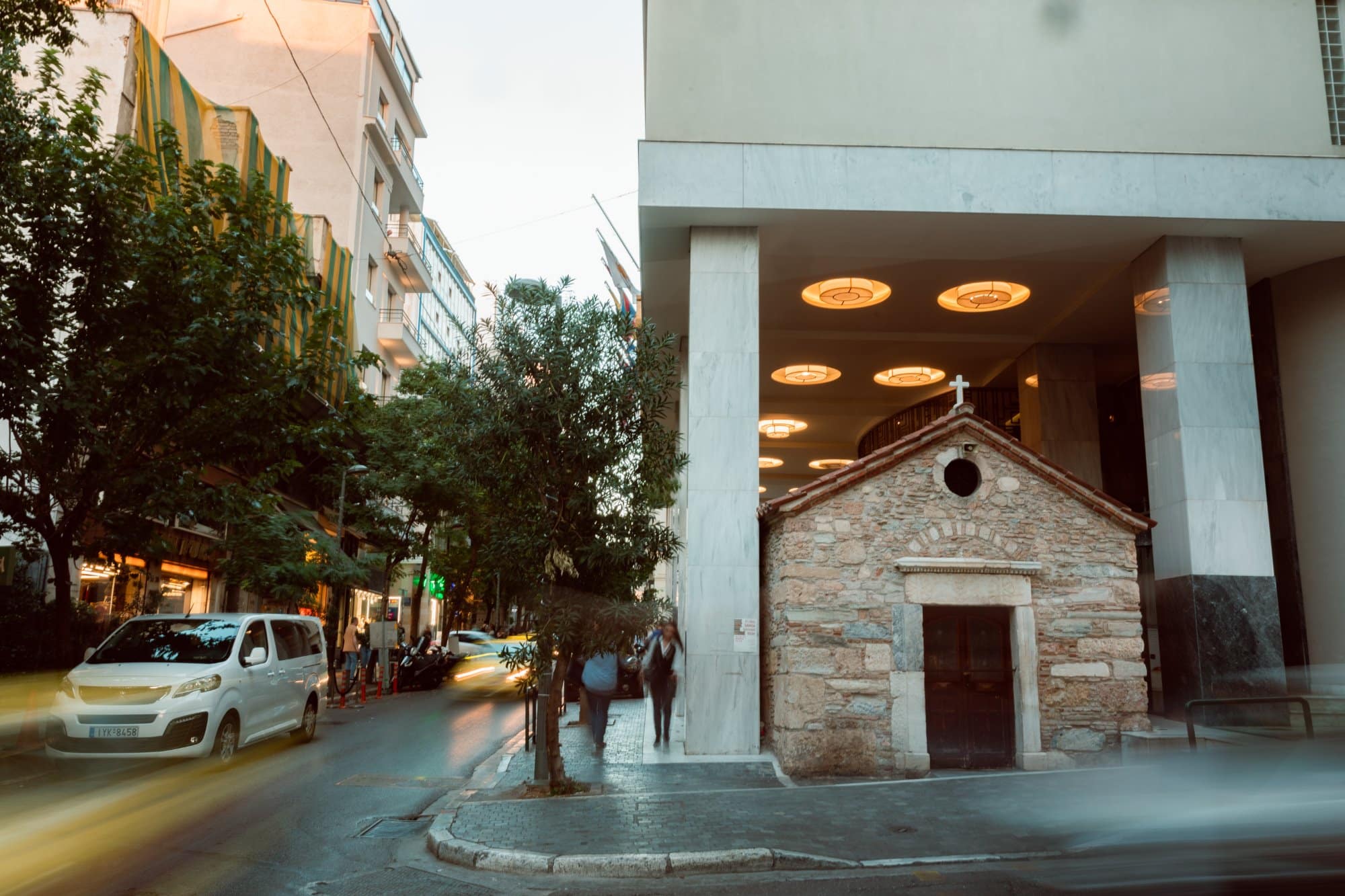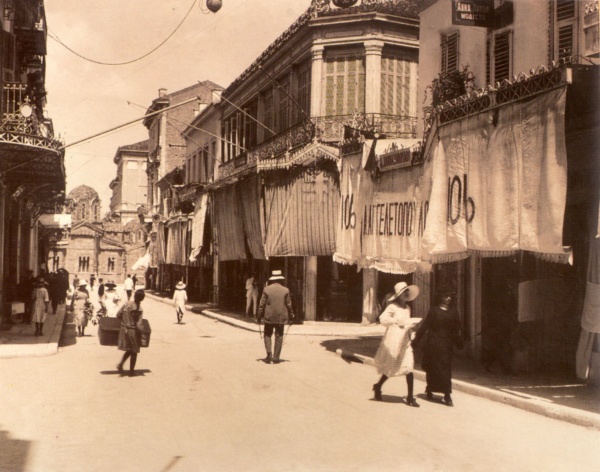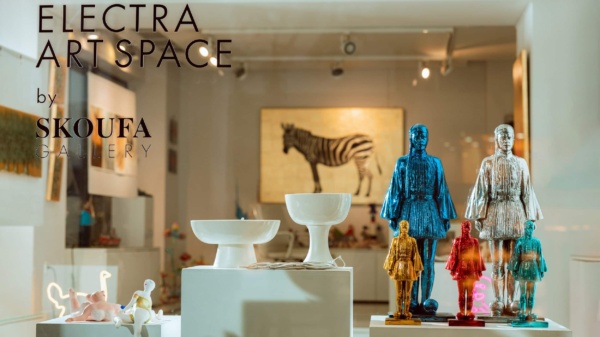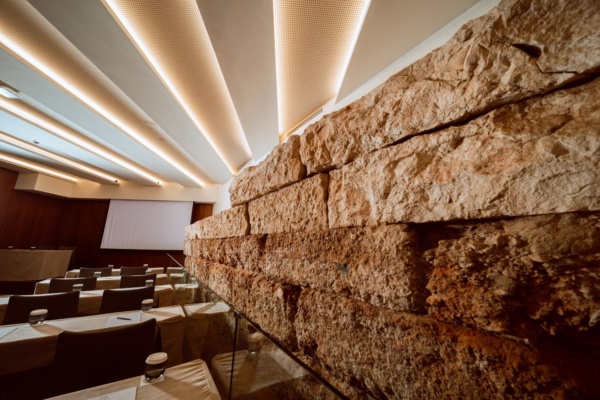Agia Dynami
At the Heart of Mitropoleos Street
This petite domed basilica, a testament to the craftsmanship of a bygone era, boasts an ancestry dating back to the 16th century. It occupies a space over a historical expanse, where once the Themistoclean Wall was standing, dating back in 478BC.
Step inside, and you’ll find an architectural masterpiece that enchants both externally and internally. The eastern face graces us with a semicircular apse, while within, two additional apses flank the central one.
Adorning its timeworn walls, ancient icons whisper stories of faith. To the right, Saint Kyriaki, Saint Catherine, the beheading of Saint John the Baptist, and Saint Philothei captivate the observer. On the left, Saint Hierotheos, Saint Dionysios, Saint Demetrios and others, beckon you into their world of devotion.
Yet, beneath the sanctified floor of the Holy Altar, a secret lies in wait – a vast subterranean cave, plunging some 15 meters into the earth. This hidden realm, connected to an enigmatic arcade, hints at a time when underground life thrived in this very spot. The ancient frescoes gracing the walls tell a tale of birds, vine leaves, and angels wielding swords, hinting at a place of worship and mystery. Amongst it all, small columns, some fractured and others firmly rooted in the earth, reach even further back in history, perhaps to ancient times or even the Temple of Hercules.
This church bore the name “Metochi of Rodakio,” a tribute to its neighborhood. But it was also known as “Mentelitissa,” a curious twist on the name Penteli. “Agia Dynami” translates to the Virgin Mary as the protector of women close to giving birth, hence the temple’s annual celebration on September 8, coinciding with the Nativity of the Theotokos. Yet, beneath this overt symbolism, history unveils another layer of meaning, concealed like a well-guarded secret. During the tumultuous years of the 1821 Revolution, this modest temple emerged as a symbol of unwavering strength for Greek patriots.
The presence of archaic elements is characteristic of many temples from the Ottoman era. These architectural gems, often incorporated fragments from earlier structures, whether they hailed from ancient times or later Christian eras. Notably, the exterior door of Agia Dynami proudly showcases a marble frame, adorned with Christian symbols, a silent testament to the enduring power of faith.

